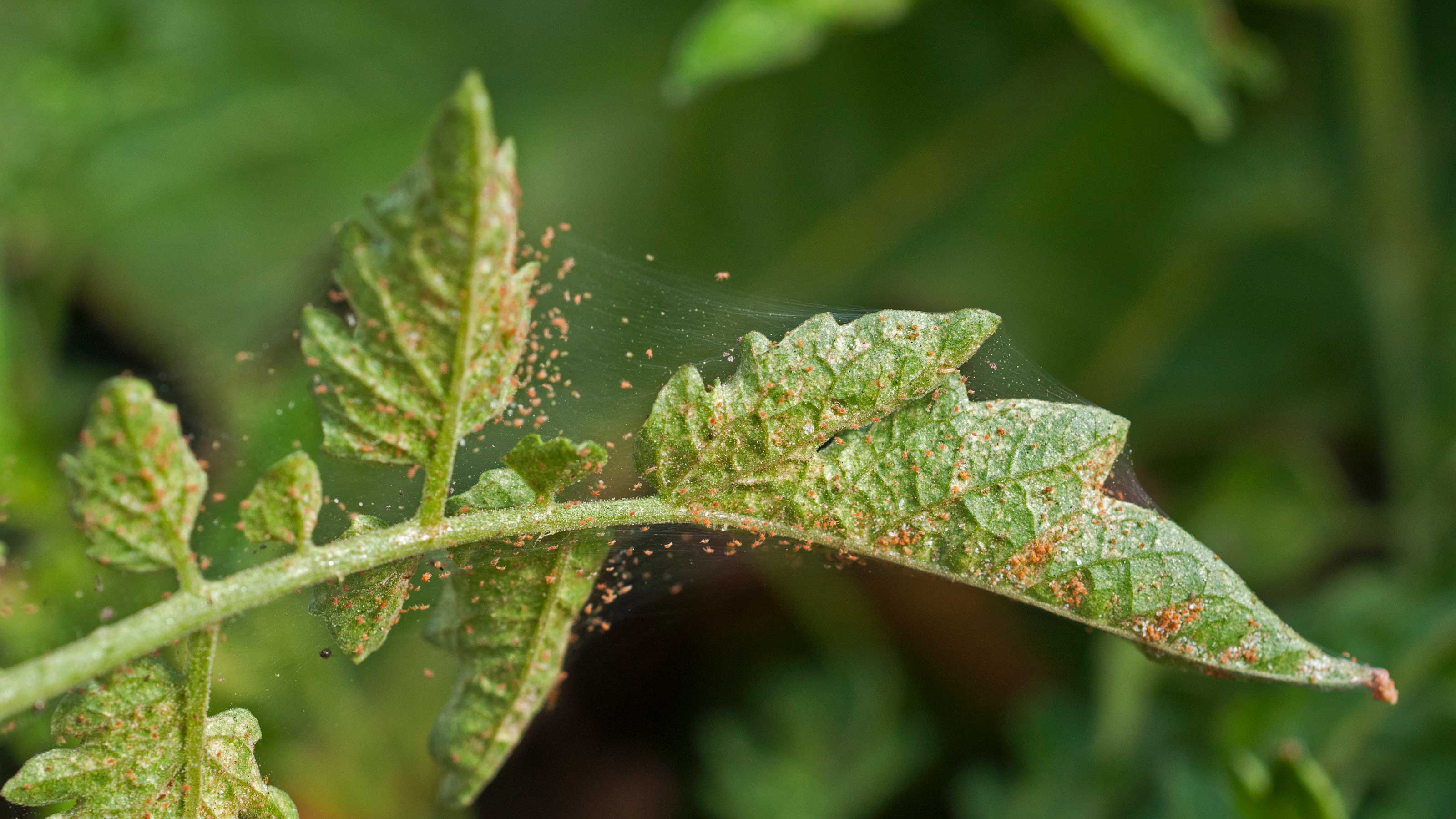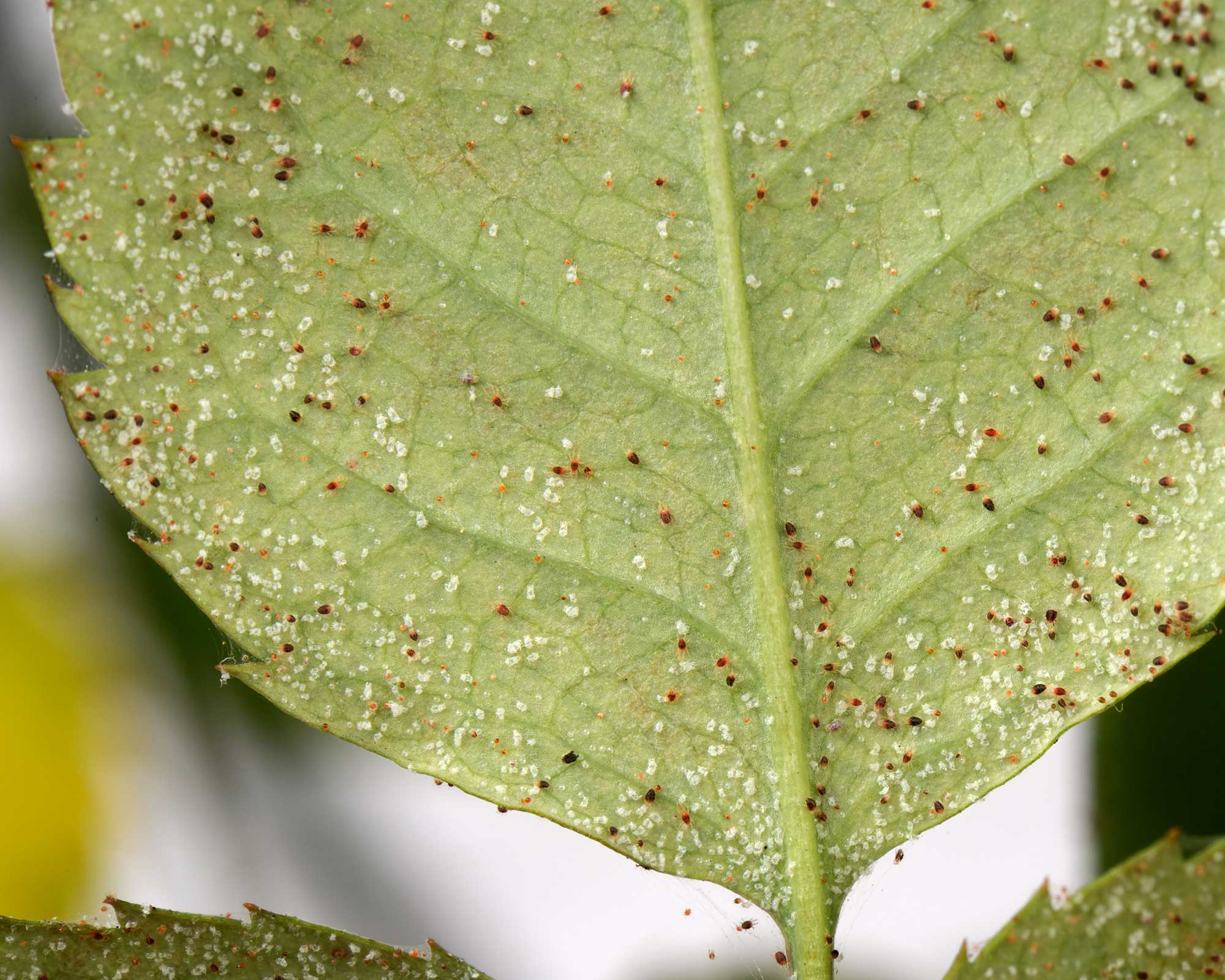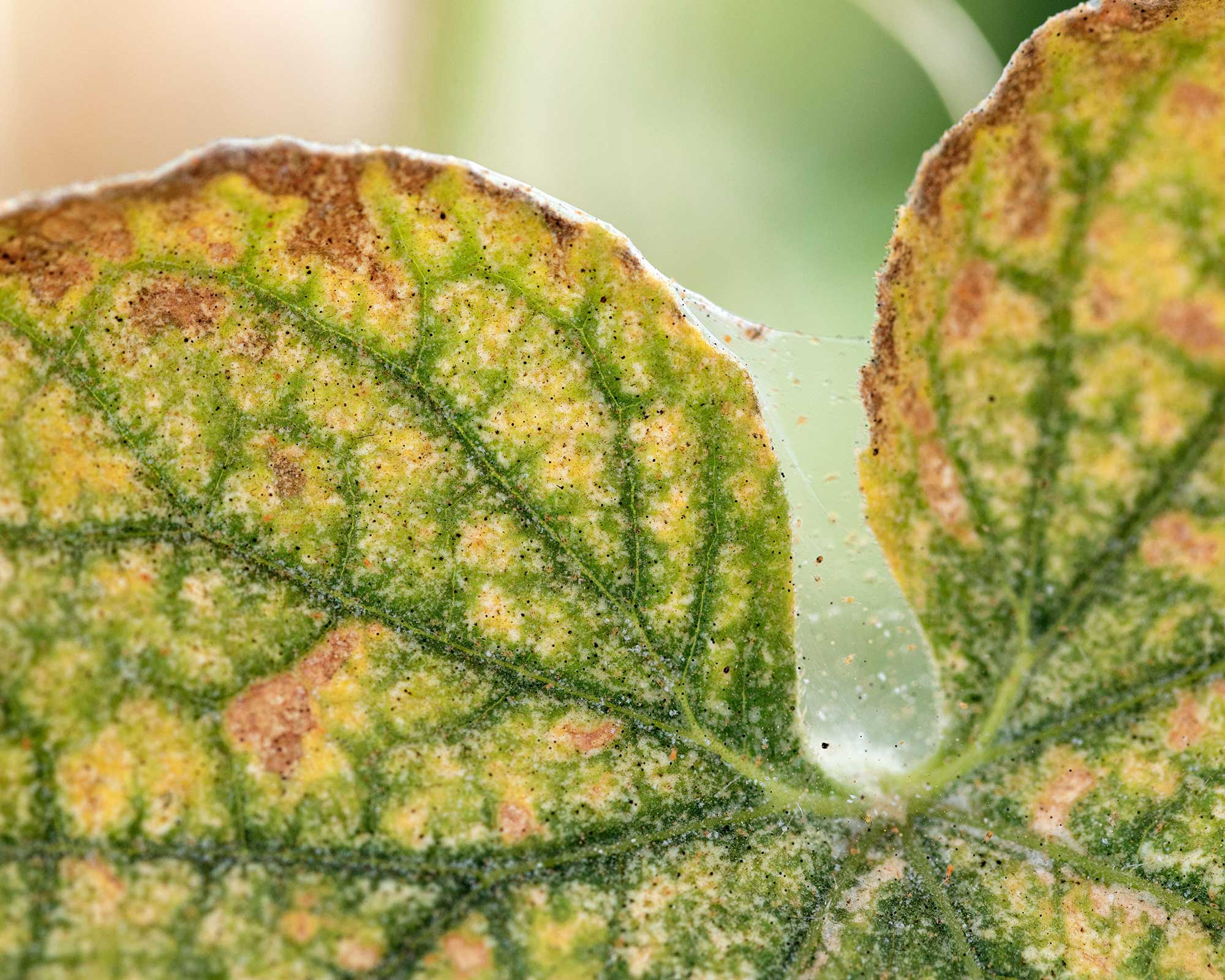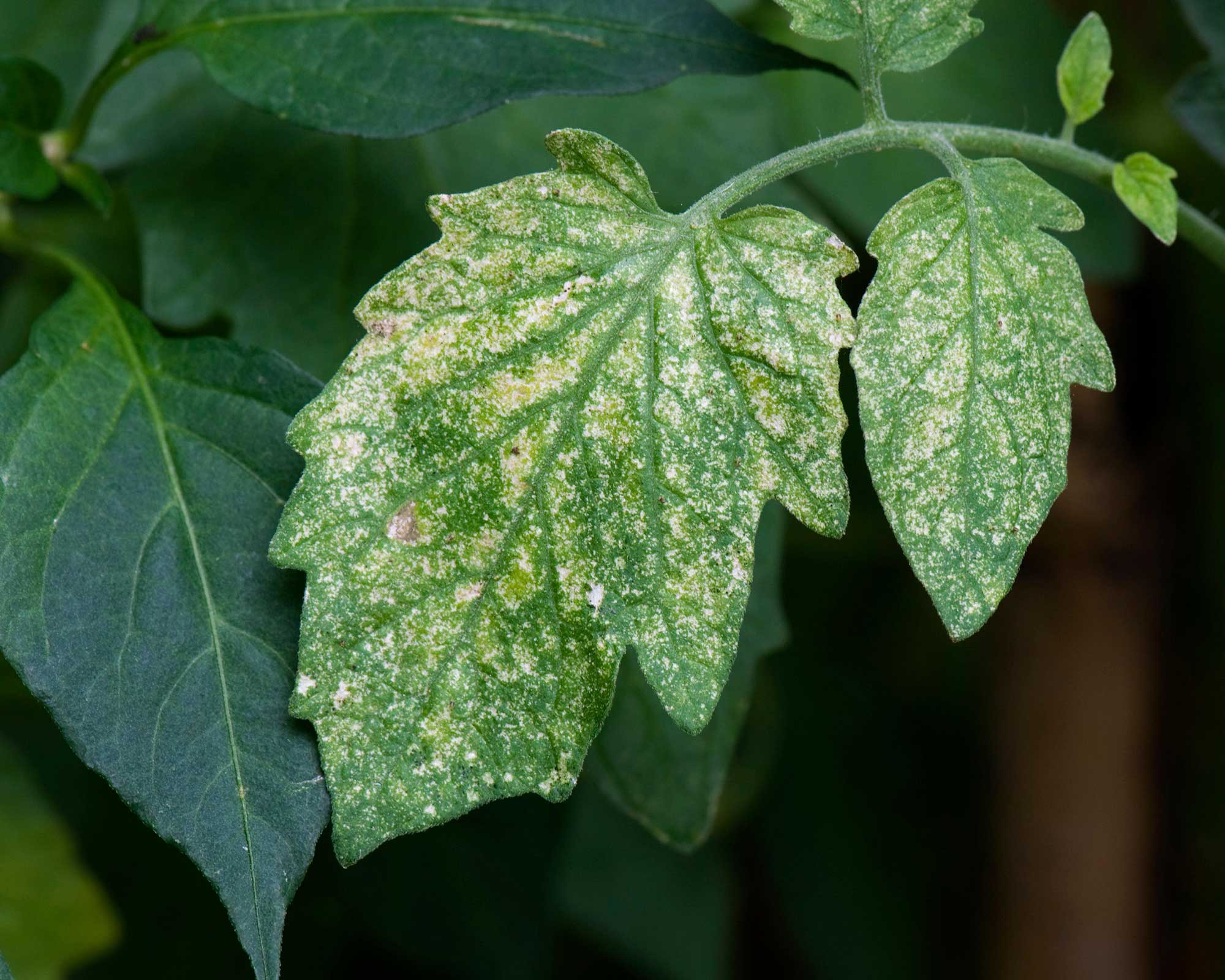How to get rid of spider mites: clear these tiny pests from your yard
Learn how to get rid of spider mites with our expert advice so you can protect your greenhouse, houseplants, borders, and pots


We've got everything you need to know to learn how to get rid of spider mites, so if these pests are plaguing your houseplants, greenhouse, or garden borders, there's no need to despair.
They may be tiny, but, as you'll already know if you've had to look up how to get rid of ants, too, even the smallest of pests can be a pain. Spider mites are sap-sucking insects, causing damage to a wide range of plants, from peaches and cucumbers to pelargoniums. Usually, this leads to the leaves becoming mottled, but in more severe cases, it can result in the plants dying.
Luckily, there are some simple ways to protect your flowers, shrubs, and crops from this pest and treat those that are already affected.

How to get rid of spider mites naturally
For those who like to adopt eco-friendly wildlife garden ideas in their outdoor space, chemicals are likely to be a no-go. But if you need to know how to get rid of spider mites naturally, there are a few options to choose from.
If you've spotted infected plants in your greenhouse or indoors, isolate them by bringing them outdoors and away from other plants – particularly in late summer before the mites start to seek shelter for the winter months. You can then give your greenhouse a good clear-out and clean to reduce the risk of any leftover mites overwintering.
The RHS experts also explain how there are many biological controls that can be effective against spider mites – a good option that doesn't rely on chemicals for tackling those in greenhouses. These include predatory mites, a type of midge, and a rove beetle, all of which can be ordered online. The rove beetle – Atheta coriaria – will also feed on thrips and fungus gnats.
You can also try spraying your plants with water – as with getting rid of aphids, this alone can be enough to dislodge the bugs. Simply use your best garden hose on greenhouse or outdoor plants, concentrating particularly on the undersides of the leaves. For indoor plants, try placing them in the bath and using the shower head to spray the leaves, allowing the water to drain freely so the soil doesn't become waterlogged.

How to get rid of spider mites with insecticide
John Negus, a gardening expert from Amateur Gardening, suggests spraying affected plants with Bug Clear for Fruit & Veg, available on Amazon. 'Based on rapeseed oil, which blocks the minute creatures' breathing pores, it is usually very effective,' he says.
'Sadly, after spraying, infested leaves may shrivel and drop but, if you water freely, new foliage will replace them.'
Other pesticides are also available that will help tackle this pest. Just remember to always follow the instructions on the label, taking necessary safety precautions. If using on food crops, ensure the label says it's safe to do so. Also, avoid spraying plants when they are in flower – this can harm visiting pollinators, explains the RHS.

How to prevent spider mites
Spider mites hate damp conditions, says John Negus. So, try to keep on top of watering plants, avoiding letting them dry out.
You can increase humidity indoors by placing your potted houseplants on a tray filled with water and gravel – most houseplants thrive in humid conditions anyway. Choosing some of the best plants for bathrooms and kitchens can also be a good way to deter these pests, as both types of rooms are naturally more humid than others.
Also, avoid spider mites spreading across your precious plants by checking any new plants thoroughly before adding them to your garden or houseplant display.

How to identify spider mites
Spider mites are most commonly found in greenhouses and on indoor plants. During hot, dry weather, they can be a nuisance outdoors, too.
The most common type of spider mite is the red spider mite, otherwise known as the two-spotted spider mite. They are wingless, and yellowish-green in color with two dark patches, before turning an orangey-red in fall to winter.
Unlike larger pests, such as slugs, spider mites can be tricky to spot. You're more likely to see the damage they cause to plants before you see the insects themselves, but if you look on the undersides of your plants' leaves, you may spot gatherings of these tiny bugs.
'The webbing and leaf mottling are characteristics of the damage it causes,' says John Negus. This webbing is silky, similar to that of a spider.
There is also a type of spider mite that only affects beech trees – aptly named the beech red spider mite. It causes bronzing of the foliage, however, the RHS says that the damage is unlikely to affect the tree or hedges' long-term health.

The garden was always a big part of Holly's life growing up, as was the surrounding New Forest where she lived. Her appreciation for the great outdoors has only grown since then. She's been an allotment keeper, a professional gardener, and a botanical illustrator – plants are her passion.
